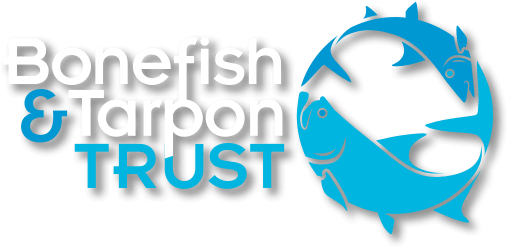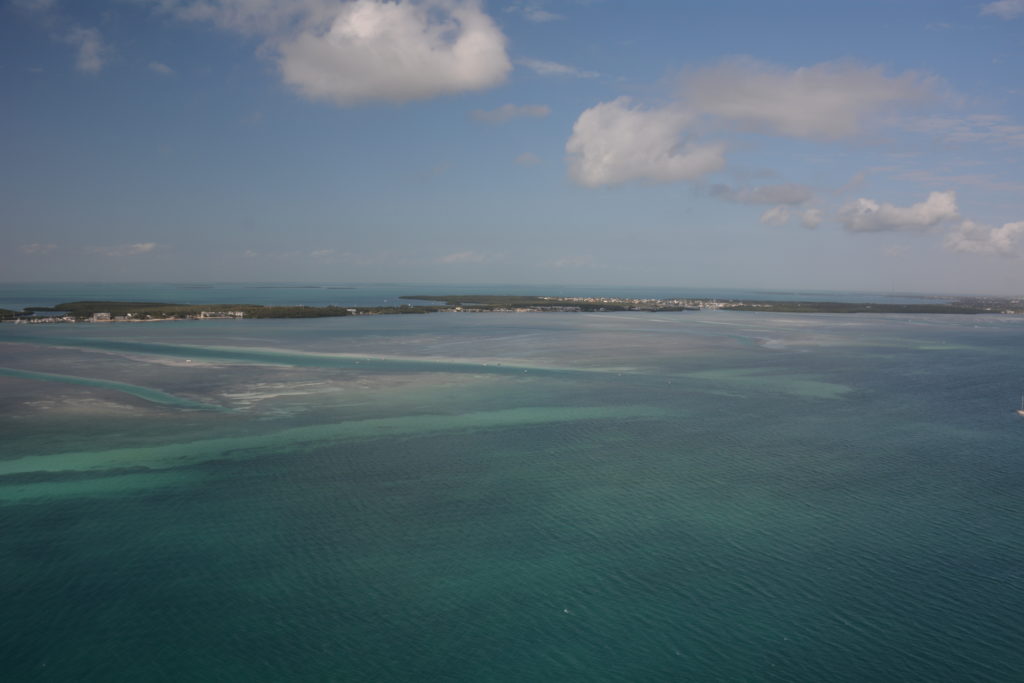Bonefish & Tarpon Trust recommends significant modifications to the Florida Keys National Marine Sanctuary’s proposed management plan (A Restoration Blueprint, Preferred Alternative 3) in order to: (1) assure better conservation of important shallow water habitats for bonefish, permit, and tarpon; and (2) eliminate unnecessary and unwarranted prohibitions on traditional flats angling in the Keys. We are persuaded by BTT’s research that Preferred Alternative 3 falls short in numerous instances and imposes needless angling-related restrictions that afford no additional benefits to the flats fishery. You may find the Restoration Blueprint here and BTT’s full position statement here. A summary of our position and recommendations follows.
Sanctuary-wide Regulations
1) BTT supports three of the proposed Sanctuary-wide regulations that:
- prohibit discharge of any material or other matter from a cruise ship except clean vessel engine cooling water, clean vessel generator cooling water, vessel engine or generator exhaust gas, clean bilge water, or clean anchor wash water;
- prohibit operating a vessel on plane or in a manner that creates an extensive wake within 100 yards of all shorelines (alternative #4);
- creates a “notch” in Key West National Wildlife Refuge to allow passage of personal watercraft around marker “G13” but on the inside of marker “G WR5.”
2) BTT opposes the proposed fish feeding regulation. We urge FKNMS to address shoreline-based fish feeding that attracts tarpon. Research on this issue pertaining to other marine life suggests that these attractions pose potential threats to the tarpon fishery. The scale of these potential threats will grow with increased tourism and resource use in the Keys.
Marine Zone Proposals
1) BTT strongly opposes nearly all no entry Wildlife Management Areas (WMAs) as proposed in the Preferred Alternative for shallow waters.
No peer-reviewed, publicly available scientific study exists to demonstrate that flats fishing, either by push poling or with the use of a trolling motor, has adverse impacts on wildlife and habitats that these WMAs are meant protect. Therefore, restricting access to flats fishing is in direct conflict with the 1997 Refuge Act, particularly within the National Wildlife Refuges (NWR) where many of these zones occur. The 1997 Refuge Act specifies angling as a “priority public use” and mandates action to “facilitate” angling within the NWRs once angling is found to be “compatible” with resource conservation (the U.S. Fish and Wildlife Service made such a compatibility determination in its most recent Comprehensive Conservation Plan for the Keys Refuge units). Additionally, the small size of these zones provides no protection for flats species that use much larger areas as home ranges.
RECOMMENDATION: BTT recommends that no entry WMA designations be changed to less restrictive no motor WMAs, which would allow for flats fishing while, at the same time, achieve WMA conservation goals.
2) BTT strongly objects to poorly conceived and imprecise idle speed and transit only zones on Moser Channel and Channel Key banks.
It is true that these banks are important, fragile ecosystems in need of conservation, but existing adverse impacts arise mostly from larger boats trying, often unsuccessfully, to traverse these not well-marked banks. Proposed transit only zones do not address these impacts. However, they do unnecessarily foreclose important flats angling opportunities. BTT calls on FKNMS to re-zone Moser Channel and Channel Key banks with a combination of more precisely drawn idle zones or no combustion engine zones and, in turn, restrict use of combustion engines, the main source of stress on those habitats, while still allowing traditional flats fishing to continue.
RECOMMENDATION: BTT urges the Sanctuary to reconsider these designations.
3) The Long Key and Tennessee Reef Sanctuary Preservation Area proposes needless access limitations to a critical and historic area for bonefish and tarpon fly fishing near the shoreline of Long Key.
The goal of this Sanctuary Preservation Area is to protect large and contiguous interconnected habitats of seagrass, shallow hard bottom, aggregate patch reef, and deep, drowned spur-and-groove reef, as well as to provide a corridor for migration of fishes of different life stages from Florida Bay into the Middle Keys. Fishing for bonefish and tarpon does not damage benthic habitats, nor does such angling target or stress reef fishes or spiny lobsters transitioning to adult reef habitat. Prohibiting traditional flats fishing in this area severely impinges upon an important seasonal tarpon fishery without providing further gains to conservation goals. Flats fishing here occurs only proximate to shore.
RECOMMENDATION: BTT calls on FKNMS to include a shoreline to nearshore buffer zone regulated as no motor, idle speed, and/or catch and release only to allow traditional bonefish and tarpon fishing to continue in this historic area where fishing for these species began in the Keys.
BTT supports all other proposed no motor zones within Preferred Alternative 3 and Alternative 4.
These proposed zones will alleviate stress from propeller scarring on important shallow water habitats throughout FKNMS, allowing for the habitats to recover and better support our flats fishery. We are also in support of Loggerhead basin idle speed zones and the additional idle speed zones proposed in alternative #4. These zones will provide needed protection for habitats and reduce stress on fish from fast approaching boats in productive areas to fish for bonefish, permit, and tarpon.
Additional Zoning Regulations
Even with proposed no motor zones, and additional idle speed zones, the Restoration Blueprint is insufficient for protecting flats habitats that support the fishery within FKNMS. We encourage FKNMS to include marine zoning recommendations as proposed by the Lower Keys Guides Association (LKGA) and Florida Keys Fishing Guides Association (FKFGA). LKGA and FKFGA zones were based on the expertise of more than 180 fishing guides who identified areas that are critical to sustaining the flats fishery. In addition, these proposed zones are expansive, which provides conservation at a scale appropriate to flats fish movements. For example, BTT tracking research shows that the LKGA zones protect high use areas for permit. BTT interviews with guides and knowledgeable anglers also show that FKFGA and LKGA zones overlap with productive habitats for both permit and bonefish. Affording these areas additional protection is essential to the flats fishing industry and the conservation of the species.
RECOMMENDATION: BTT encourages FKNMS to amend the preferred plan to include marine zoning recommendations provided by LKGA and FKGA. To augment LKGA and FKFGA recommendations, BTT proposes an additional four no motor zones east of Annette Key. These zones occur in productive bonefish, permit, and tarpon areas, and provide conservation at a scale that matches the ecology of the fish.
Western Dry Rocks
BTT supports interventions to reduce fishing effort at Western Dry Rocks (WDR), but we believe the trolling only designation will not effectively meet management goals. Therefore, we propose that FKNMS consider a seasonal spring – summer no entry closure at WDR. BTT’s research demonstrates that WDR is likely the most important spawning site for permit in the Lower Keys. Unfortunately, both angler reports and research data suggest that an unsustainable number of hooked permit are eaten by sharks before they are landed. Given the potential for this ostensible catch and release fishery (which in reality is largely catch and kill) to become more popular, and that predation rates are likely already unsustainable at current levels of fishing effort, BTT supports actions to reduce fishing effort at this critical fish aggregation site. Of the seven fish species that spawn there, all spawn in spring – summer, and four of these species, including permit, only spawn within that window. This seasonal closure would allow winter fishing activities within the WDR WMA which, due to its geographic position, provides fishing opportunities during strong northern winds common in the winter. This location also aggregates seasonal pelagic species such as kingfish and sailfish. Targeting these species in the winter does not interfere with spawning fish nor damage benthic habitats.
We add that the purpose and need of this kind of angling restriction/fish conservation measure is supported by empirical evidence. These kinds of science-based restrictions can overcome any other legal presumptions or agency duties to otherwise allow or facilitate angling (e.g.; Executive Order 12962, 16 USC 7912, Secretary of the Interior Orders 3347, 3356).
Photo: Dan Dow




